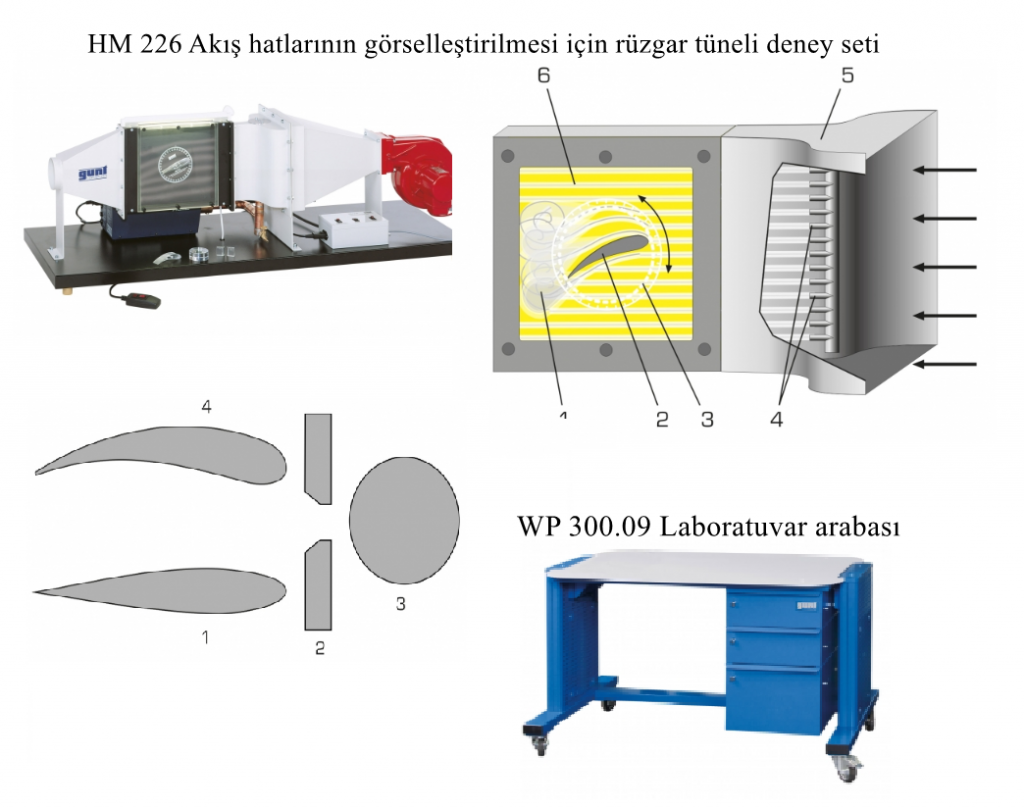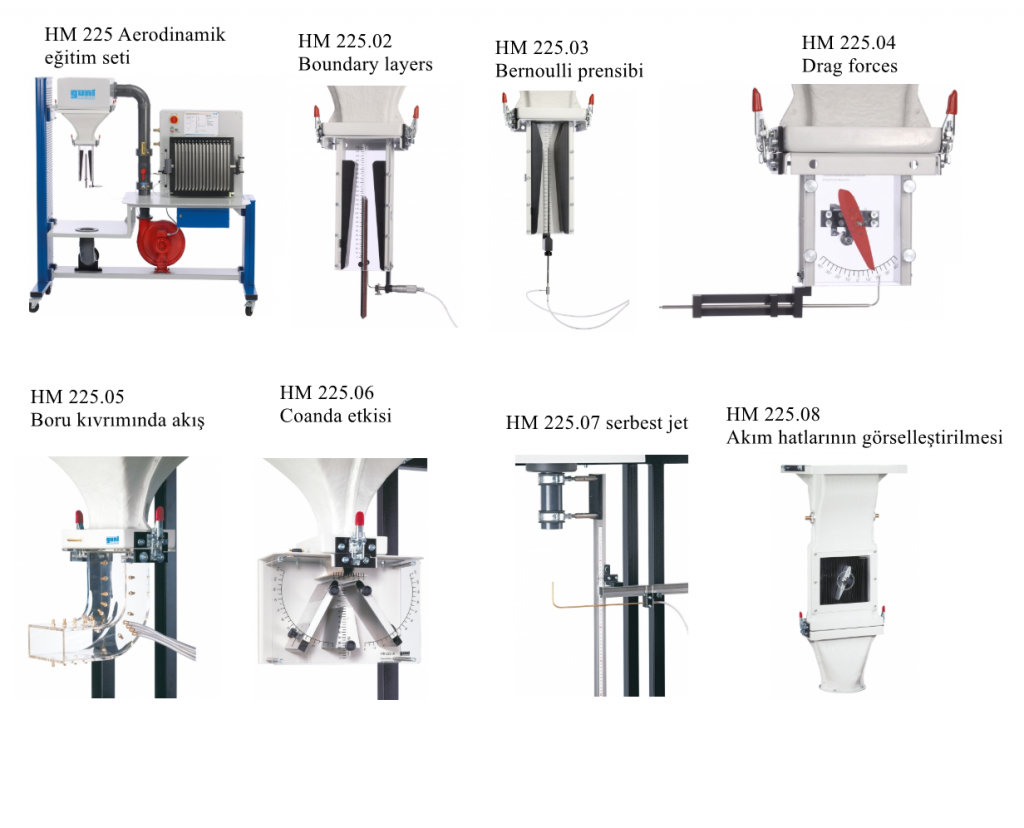
HM160
Hydraulic engineering is concerned with artificial waterways, the regulation of rivers and with barrages, amongst other things. By using experimental flumes in the laboratory, it is possible to teach the necessary basic principles.
HM162
Hydraulic engineering is a crucial part of engineering. How do we achieve the necessary river depth for ships? How does open-channel flow change during flooding? How far upstream do measures such as control structures have an effect? How can the discharge at barrages be calculated? By using experimental flumes in laboratories it is possible to teach The experimental flume HM 162 with a closed water circuit has a cross-section of 309x450mm. The length of the experimental section is between 5m and – with further extension elements HM 162.10 – a maximum of 12,5m. The side walls of the experimental section are made of tempered glass, which allows excellent observation of the experiments. All components that come into contact with water are made of corrosion-resistant materials (stainless steel, glass reinforced plastic). The inlet element is designed so that the flow enters the experimental section with very little turbulence.A wide selection of models, such as weirs, piers, flow-measuring flumes or a wave generator are available as accessories and ensure a comprehensive programme of experiments. Most models are quickly and safely bolted to the bottom of the experimental section. the basic knowledge required to understand the answers to these questions and to develop possible solutions.
HM162.12
Using HM 162.12, the experimental flume HM 162 or HM 163 can be operated by a PC. Flow rate, inclination adjustment and frequency of the wave generator HM 162.41/HM 163.41 are set by the software. Measured values are recorded and saved. Additionally, it is possible to program sequences over time for flow rate and wave frequency. These sequences can be saved and loaded at a later date to carry out automated experiments.
HM162.13
It is important to know the discharge depth for many experiments in open channel flow.Using HM 162.13, the discharge depths in form of pressure heads are recorded with ten pressure sensors and displayed in a software. Additionally, the flow rate of HM 162/HM 163 is recorded and displayed. All sensors are connected to a measuring amplifier. The measured values are transmitted directly from the measuring amplifier to a PC via USB for evaluation. The data acquisition software is included.

HM170
A wind tunnel is the classic experiment system for aerodynamic flow experiments. The model being studied remains at rest while the flow medium is set in motion, and thus the desired flow around the model is generated.HM 170 is an “Eiffel” type open wind tunnel used to demonstrate and measure the aerodynamic properties of various models.

HM226
Streamlines can be visualised in steady flow in the wind tunnel by using fog, smoke or tufts. In this way, a clear impression of an instantaneous flow field can be presented and problematic flow areas, such as stall, can be shown.The experimental unit HM 226 is an open wind tunnel, in which streamlines, flow separation and turbulence can be made visible by using fog. The evaporated fog fluid is non-toxic, water soluble and the precipitate does not affect common materials.
WP300.09
The laboratory trolley enables to easily store GUNT experimental units and, when needed, moving it comfortably to another place.

HM225: Aerodynamics describes the behaviour of bodies during flow around or through bodies with a compressible fluid. The knowledge of experiments in aerodynamics has a significant influence on the development of means of transport (vehicles, ships, aircraft) and in architecture (skyscrapers, towers and bridges).
HM225.02: During incident flow of bodies fluids such as air “stick” to the surface of the body and form the so-called boundary layer. The kind of flow within the boundary layer – laminar or turbulent – significantly affects the drag. The findings from studying the boundary layer are taken into consideration when designing aeroplanes, vessels and turbomachines.
HM225.03: The total pressure in a steady flow is constant. The sum of the static and dynamic pressures gives the total pressure. A change in the cross-section of the flow channel causes the flow velocity to vary inversely proportional to the cross-sectional area. These physical laws are fundamentals of fluid mechanics education.The HM 225.03 experimental unit – used in the aerodynamics trainer HM 225 – allows the measurement of the total pressure and the static pressure.
HM225.04: Every body immersed in a flow is subject (besides hydrostatic lift) to a flow-induced force, which depends mainly on the velocity of flow, the size of the body and the shape of the body. The shape of the body is represented by the dimensionless number, the drag coefficient cw.
HM225.05: When laying pipes it is essential that they are adapted to the circumstances of their environment, which means the pipes will necessarily include deflections in the form of bends. Changing the direction of flow in a pipe changes the pressure conditions.
HM225,06: The Coanda effect refers to the characteristic of flowing fluids to follow the curvature of a convex surface instead of continuing in the original direction of flow. Nowadays this effect is applied in various fields of engineering, e.g. to increase lift in air travel, to control the air flow in air conditioning or as a pneumatic logic element in industrial control systems.
HM225.07: Flow and pressure losses occur when a parallel flow exits into stationary surroundings. The velocity of the exiting flow decreases depending on the distance and diameter of the outlet area. The velocity decreases with increasing distance from the middle jet. The findings from the velocity profiles are used for example in the construction of nozzles and turbomachines.
HM225.08: Streamlines can be visualised in steady flow in the wind tunnel by using fog, smoke or tufts. In this way, a clear impression of an instantaneous flow field flow can be presented and problematic flow areas, such as stall, can be shown. The HM 225.08 experimental unit – used in the aerodynamics trainer HM 225 – allows the streamlines to be visualised using fog.

HM450C: Turbomachines such as pumps and turbines are energy converters. Turbines convert flow energy into mechanical energy and pumps convert mechanical energy into flow energy.HM 450C can be used to investigate a centrifugal pump. Experiments can be performed on two key water turbine designs: Pelton and Francis turbine, available as accessories HM 450.01 and HM 450.02.
HM450.01: The Pelton turbine is a type of free-jet resp. impulse turbine which convert the pressure energy of water into kinetic energy entirely in the distributor. Pelton turbines are used at large heads and relatively low flow rates. The turbine power is adjusted by means of the nozzle cross-section. In practice, Pelton turbines are used for driving synchronous generators, where they run at constant speed.The Pelton turbine HM 450.01 is an accessory for the HM 450C trainer.
HM450.02: The Francis turbine is part of the reaction turbines which convert the pressure energy of water into kinetic energy in the distributor and in the rotor. Francis turbines are used at medium heads and large flow rates. The turbine power is controlled by adjusting the guide vanes. In practice, Francis turbines are used in run-of-the river power plants and in storage power plants.The Francis turbine HM 450.02 is an accessory for the HM 450C trainer.
